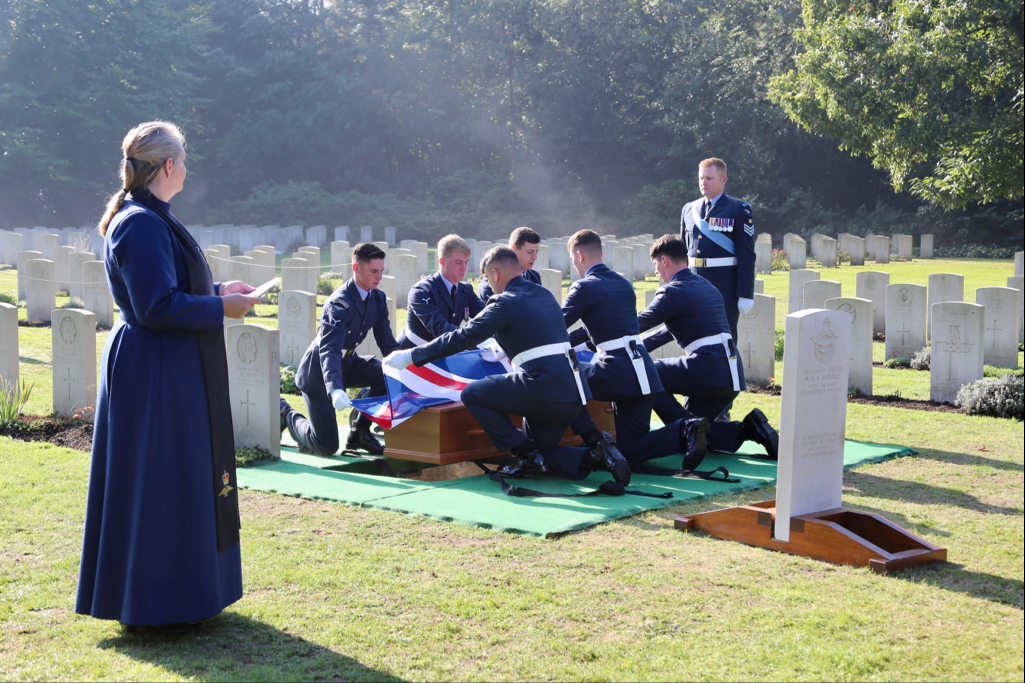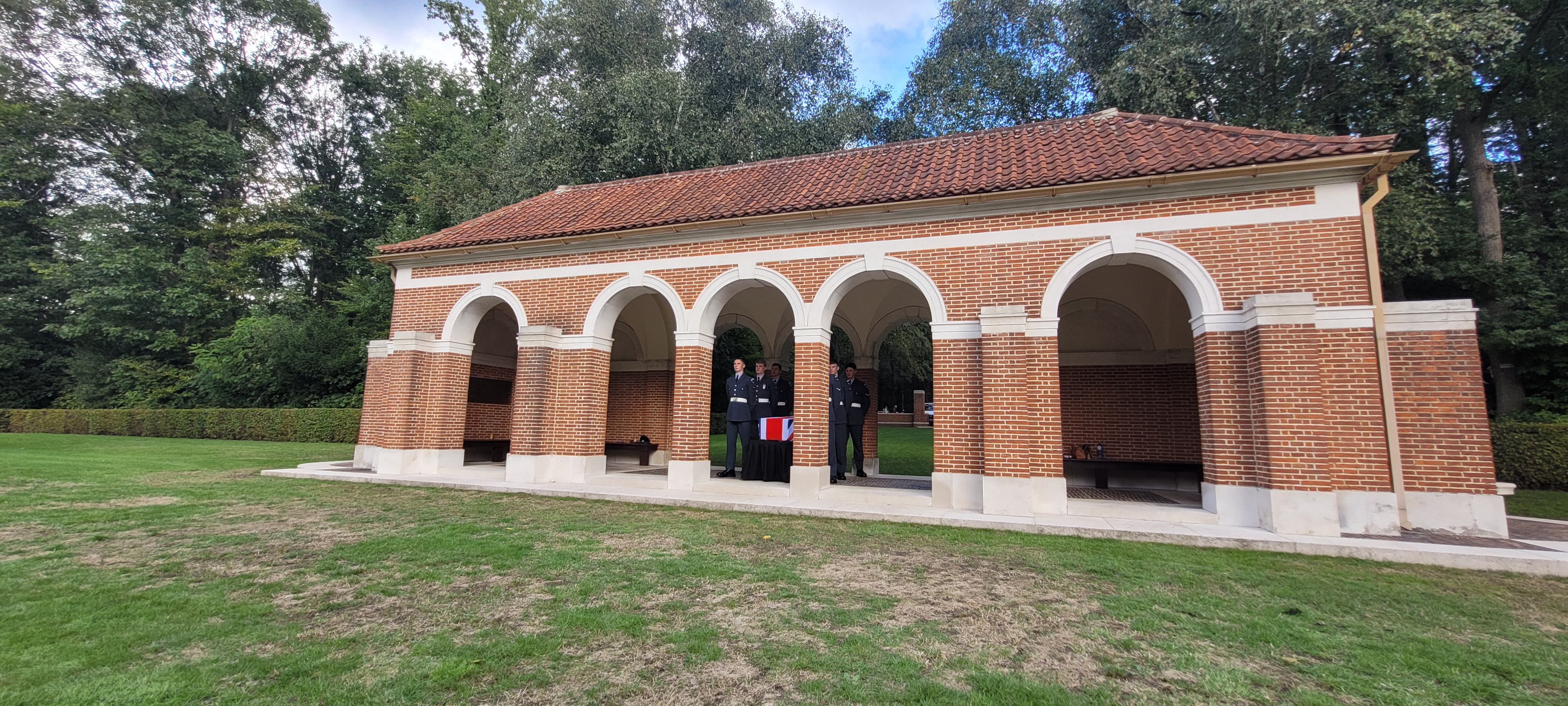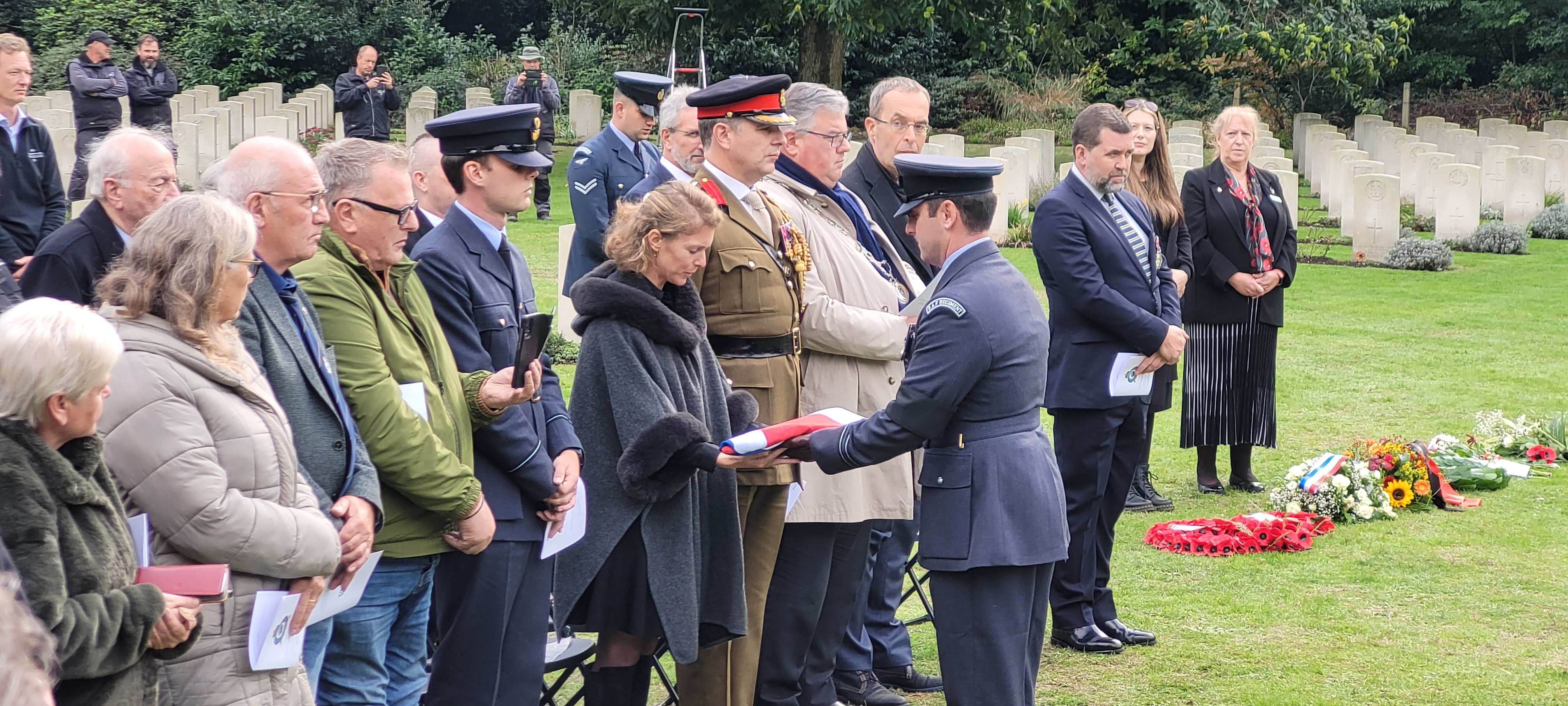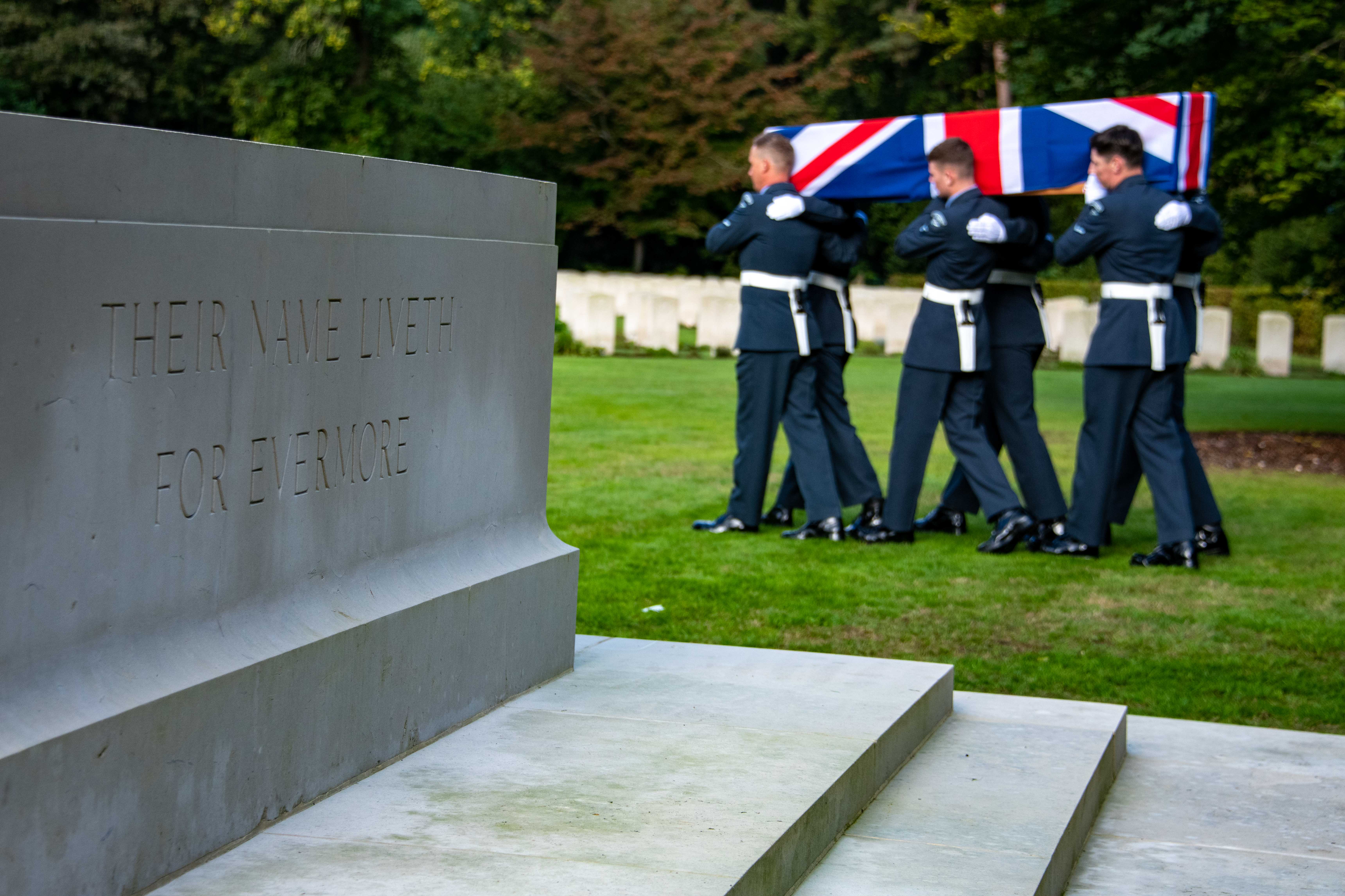
A series of ceremonies in the Netherlands this week which commemorated the sacrifices of World War Two RAF airmen, with the burial of a final set of remains.
_____________________________________________________________
A full military burial was held for Flight Sergeant William Robert Stephen Hurrell, 78 years after he was killed in action. His was the third burial of the week. A further ceremony also laid to rest one airman’s additional remains.
.jpg)
The service at Jonkerbos War Cemetery was attended by members of Flight Sergeant Hurrell’s family, who had travelled from Australia, representatives of the RAF, the British Embassy in the Netherlands, and dignitaries from the municipality of Lochem. Personnel from the RAF’s Queen’s Colour Squadron bore his coffin.
The service was led by Reverend (Squadron Leader) Josephine Critchley, Chaplain at RAF Honington, and organised by the MOD’s Joint Casualty and Compassionate Centre, also known as the ‘MOD War Detectives’.

The remains of Flight Sergeant Hurrell were discovered in 2019 after the Joint Aircraft Recovery Team of the Netherlands MOD excavated of an aircraft on farmland near the village of Eefde in the municipality of Lochem. It was part of the Netherlands World War Two National Aircraft Recovery Program, of the Ministry of Internal Affairs.
Working alongside the Recovery and Identification Unit of the Royal Netherlands Army and The RAF Air Historical Branch, Joint Casualty and Compassionate Centre reviewed documents confirming the aircraft was a Typhoon MN582 of 175 Squadron RAF which crashed on 26 September 1944. Flight Sergeant Hurrell was flying in a formation of six aircraft on an armed reconnaissance north of Arnhem when they were attacked by up to 60 enemy ME109’s.
It has been an absolute privilege to arrange this ceremony for Flight Sergeant William Hurrell and I am grateful for the help given by the community of Lochem. I am honoured to stand alongside his military and blood family to pay him this final tribute.
Tracey Bowers
Joint Casualty and Compassionate Centre
William Robert Stephen Hurrell was born on 1 May 1923 in London to Sydney and Daisy Hurrell. His enlistment service records show he lived in the East Ham area of London and was an apprentice fitter and turner who served in India and America after joining the RAF. He received his pilot’s wings in 1942 and was promoted to Flight Sergeant a year later.
We grew up knowing that Bill was shot down at the end of the war and that his parents had never found him. We knew he was in the Netherlands – we just weren’t sure where exactly. When we heard about the salvage project we were over the moon. Representing the rest of my family back home means a lot. Bill’s parents and his brother, my grandfather, died never knowing where he was , but we know have closure for them and for ourselves.
Brydie Hurrell
Flight Sergeant Hurrell’s great niece

As we have committed William’s body to the ground, we go from here knowing that his selfless actions ensured the security of so many; as he laid down his life, we are assured that he rests in God’s loving presence and is at peace.
Reverend (Squadron Leader) Critchley
Chaplain at RAF Honington
We are privileged to host this ceremony today, dedicated to Flight Sergeant Hurrell and the ultimate sacrifice he paid fighting for his country 78 years ago. It is our honour to commemorate him and care for his grave in perpetuity.
Geert Bekaert
Director for the Central and Southern European Area at the Commonwealth Grave Cemetery
The RAF and the Royal Canadian Air Force also held a joint ceremony at Jonkerbos War Cemetery for the seven-strong British and Canadian crew of Stirling BK716 218 (Gold Coast) Squadron.
.jpg)
The crew left Downham Market, Norfolk, on 29 March 1943 for a raid on Berlin, but shortly afterwards their flight was designated “missing believed killed”. The crash site was later located in lake Markermeer and, in 2020, the remains were removed by the Joint Aircraft Recovery Team of The Netherlands MOD.

Following the recovery, part of the National World War Two Aircraft Recovery Programme of the Netherlands, and working alongside the Recovery and Identification Unit of the Royal Netherlands Army and The RAF Air Historical Branch, Joint Casualty and Compassionate Centre confirmed from the wreckage’s unique engine plate was that of Stirling BK716. Human remains were few, and it was impossible to assign them to individuals, but all were remembered at burial:
- Flying Officer John Frederick Harris RAF
- Flying Officer Harry Gregory Farrington RCAF
- Flying Officer John Michael Campbell RAF
- Sergeant Charles Armstrong Bell RAF
- Flight Sergeant John Francis James McCaw RCAF
- Sergeant Ronald Kennedy RAF
- Sergeant Leonard Richard James Shrubsall RAF
.jpg)
Also at Jonkerbos War Cemetery this week, the remains of Liverpool-born Leading Aircraftman John Stuart Mee Bromley No. 264 Squadron RAF were laid to rest 82 years after his aircraft was shot down near Dordrecht. A blessing ceremony was also held at Idaarderadeel (Wartena) General Cemetery for Pilot Officer Peter Clement Vellacott Joslin of Hornchurch who died when his Lancaster bomber crashed in September 1942.
_____________________________________________________________





